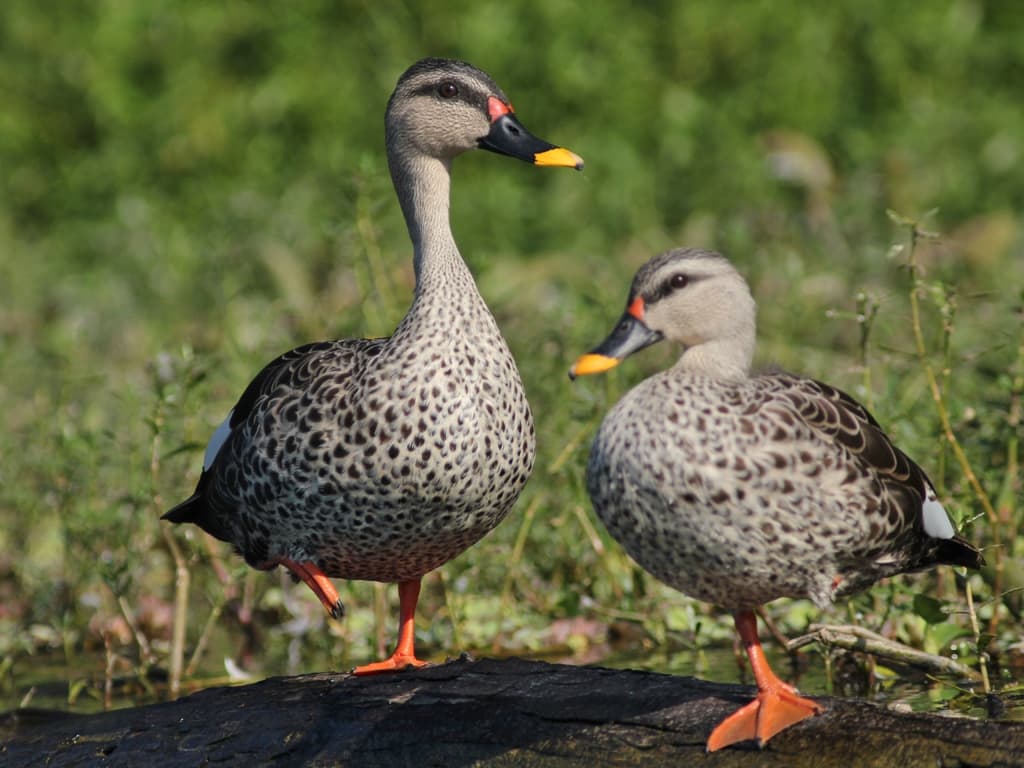Interestingly, a majority of wetland duck species in Cambodia are rare species. It is always nice to know that Cambodia is home to many endangered or rare species to thrive in. There are many wetland duck species in the world, and 5 of them are here in Cambodia. Hopefully, their population is getting better and better in the future too.
Comb Duck (ទាកាប៉ាព្រៃ)
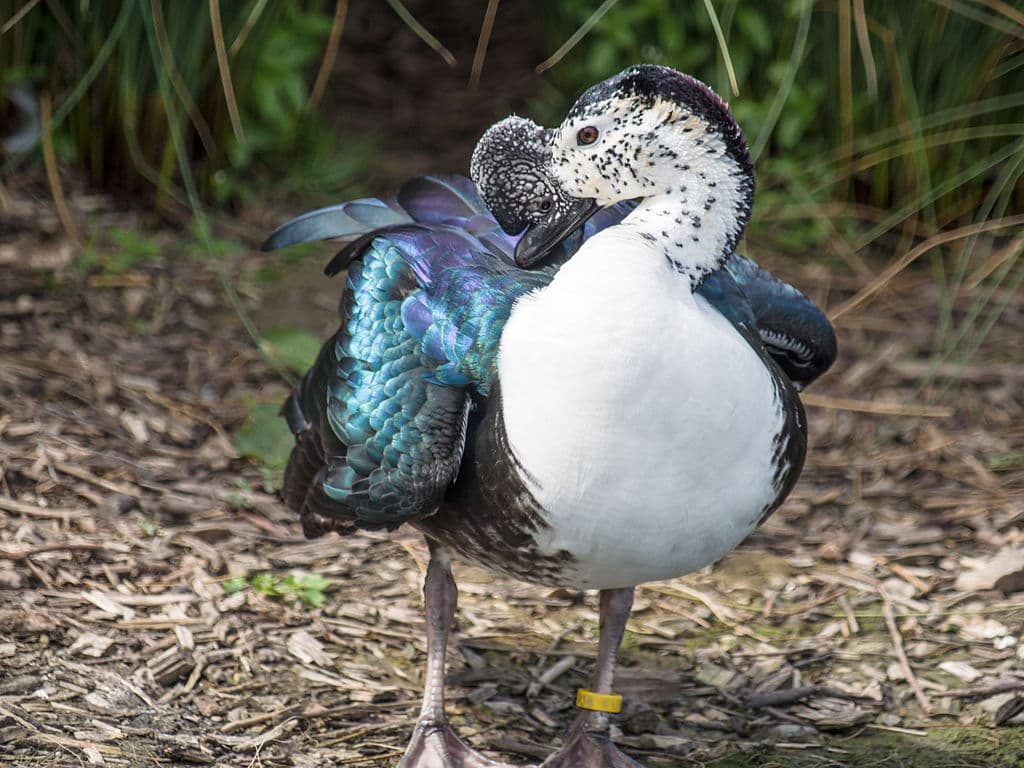
Comb duck is one of the largest duck species, growing from 56 to 76 centimeters with 116 to 145 centimeters wingspan. Adult comb ducks have a white head freckled with dark spots and a pure white neck and underparts. The upperparts of the duck is glossy blue-black with bluish and greenish iridescence, especially on the lower arm feathers. This duck gets its name from the prominent leaf-shaped comb on top of the male’s bill. The comb is fleshy and reduced in size but enlarges prior to the breeding season.
The range of comb ducks is very large, from Sub-Saharan Africa and Madagascar to Southern China, Cambodia, Thailand, and Vietnam. Within their range, they inhabit grassy ponds or lakes in open woodlands and savannas along flooded forests, floodplains, lakes, pastures, and rice paddies. This wetland duck species is found in tropical wetlands where they feed on vegetable matter. Their primary diet consists of agricultural grain, aquatic plants, seeds of grasses and sedges, and wheat. When available, comb ducks also feed on aquatic insect larvae and locusts as well. Today, their population is threatened by habitat destruction, hunting, and the indiscriminate use of poison in rice fields.
Garganey (ទាព្រៃក្បាលឆ្នូតស)
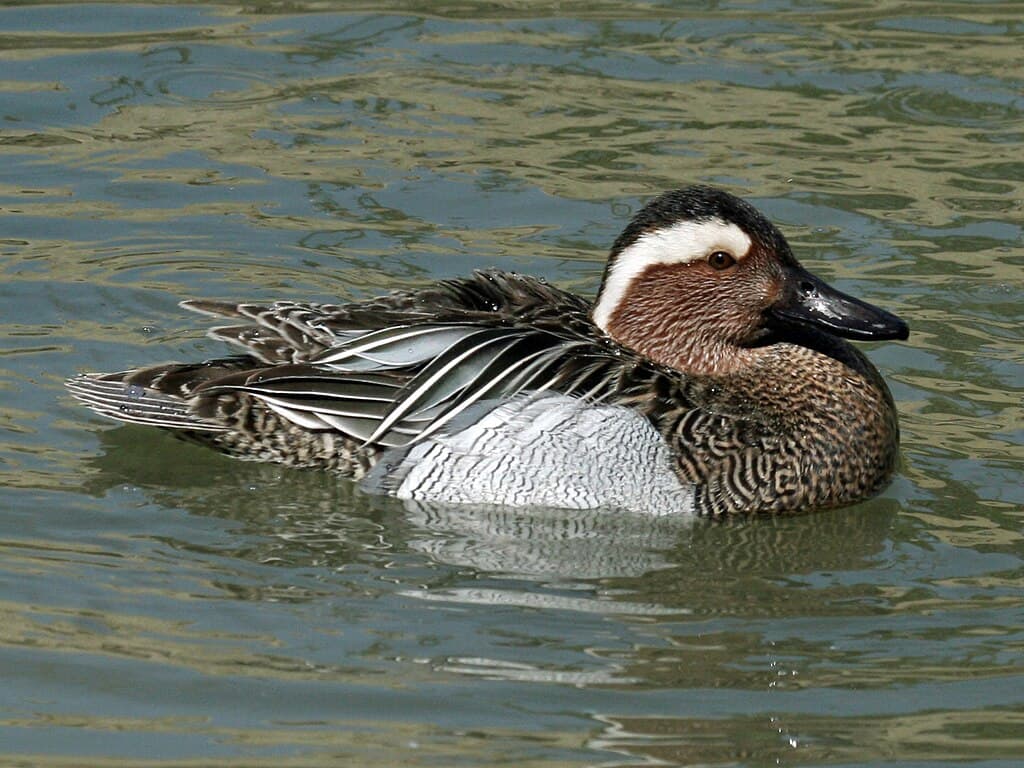
Garganey is a small duck that grows to a size of 41 centimeters with a distinctive appearance. The adult male of this duck species is unmistakable, it has gray plumage with loose gray scapular feathers. It has a brown head and breast with a broad white crescent over the eye, and gray bill and legs.
The breeding of garganey is in flooded fields and swamplands throughout Asia and Europe. This wetland duck species inhabits shallow wetlands with flooded meadows and ditches, and plenty of aquatic vegetation. As dabbling ducks, they feed on the surface of the water rather than diving so they skim instead of upending. With this habit, garganey ducks only feed on insects and plant material on the water surface.
Due to their habitat preferences, the threats to their population are from drainage and land reclamation. They are losing their habitats to dams and reservoirs that replace the natural marshes that they live in. Besides these, illegal killing and lead poisoning also harm their numbers as well.
Lesser Whistling Duck (ប្រវឹក)
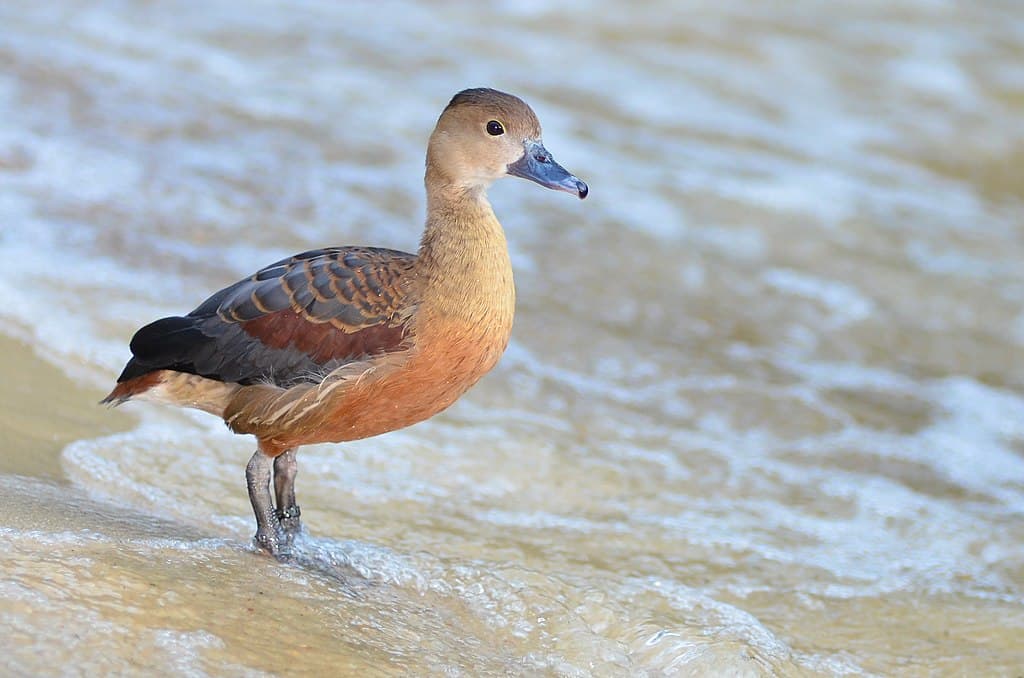
Here we have the smallest whistling duck species growing up to 42 centimeters which is also the most sensitive for cold temperatures. The lesser whistling duck has chestnut brow plumage with an orange to yellow ring around the eye. Their wings are dark brown with orange-brown tips that give a ripple effect. They fly slowly but with rapid wing-flapping that produces very prominent whistling sounds while flying. Lesser whistling ducks are nocturnal so they often rest during the day on the banks or open sea in coastal areas.
These ducks are widely distributed across lowland wetlands of the Indian Subcontinent and Southeast Asia. Usually, they are found in freshwater wetlands with good vegetation cover where they feed and rest. As gregarious birds, they are often found in flocks around lakes and wet paddy fields also. Lesser whistling ducks feed mainly on plants from the water and also grains from cultivated rice. Along with that, they also feed on frogs and small fish as well as invertebrates like mollusks and worms. People don’t hunt them because they are not considered good to eat.
Spot-Billed Duck (ទាកាបព្រៃ)
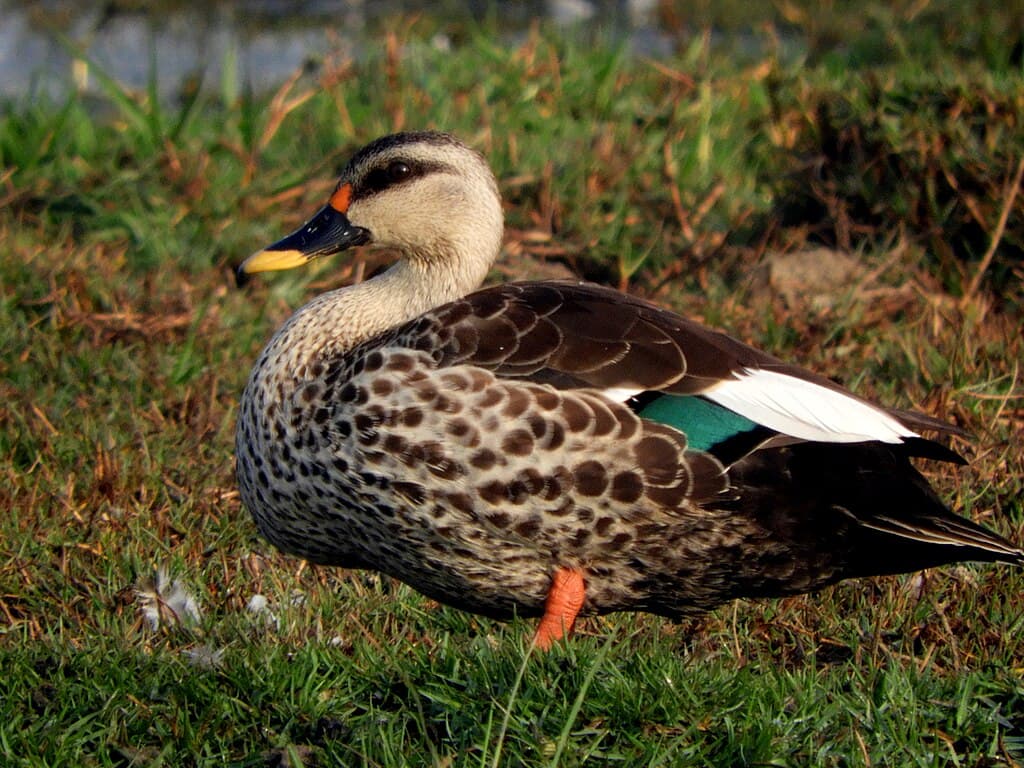
A spot-billed duck has a size of 60 to 65 centimeters in length, and it is one beautiful wetland duck species. It has a scaly patterned body with a green speculum and a band of white tertials. It got its name from the red spot at the base of its long bill with a yellow tip. Spot-billed ducks inhabit both coastal and inland wetlands like creeks, estuaries, lakes, marshes, ponds, pools, streams, and tidal flats. They feed mostly on aquatic plants, grains, grasses, seeds, and other vegetation as well as insects on some occasions.
White-Winged Duck (ទាព្រៃស្លាបស)
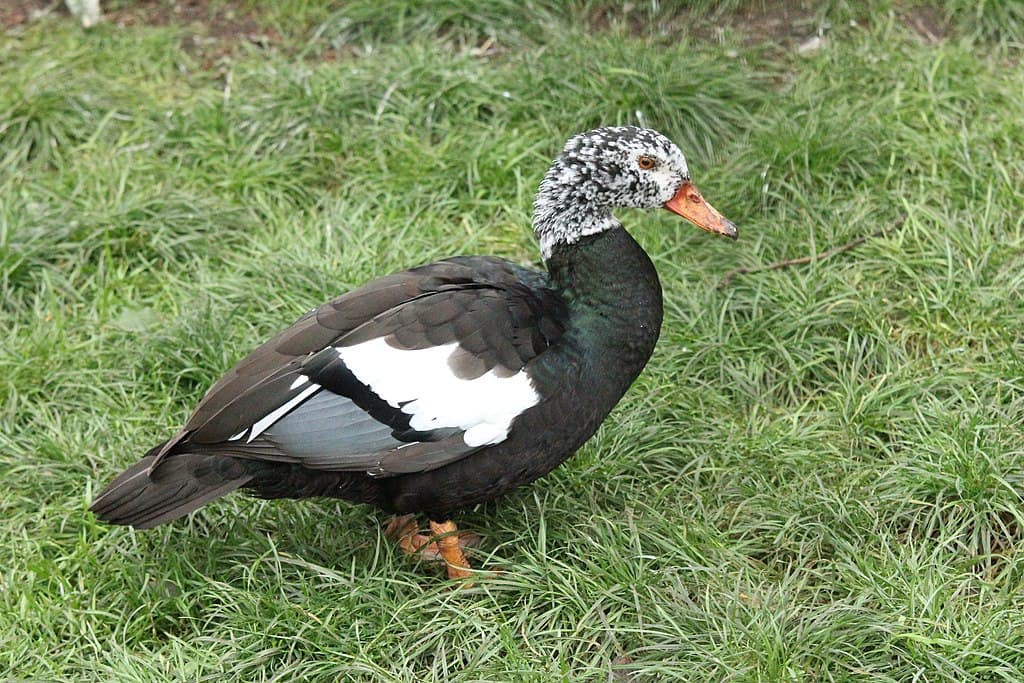
This is another large wetland duck species that can grow up to 66 to 81 centimeters with a 116 to 153 centimeters wingspan. An adult white-winged duck has a dark body that contrasts with its whitish head and neck. It inhabits stagnant or slow-flowing natural and artificial wetlands near deciduous, evergreen, or swamp forests. While most ducks feed during the day, this one chooses a different habit. It feeds at night, mostly on aquatic plants, grain, insects, rice, seeds, small fish, and snails.
People hunt white-winged ducks for their eggs and meat as well as pets. On top of that, ongoing habitat loss also plays a role in the decline of their population as well. This wetlands duck species is now considered Endangered on the IUCN Red List as there are around 1,000 individuals remaining today.
Related Post: Cormorant Species In Cambodia
